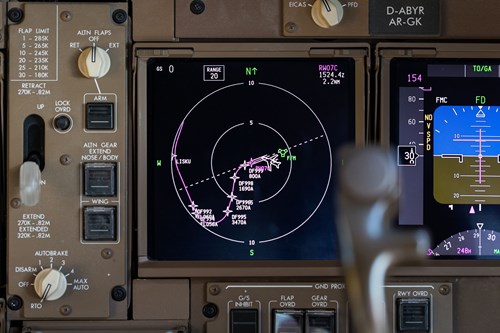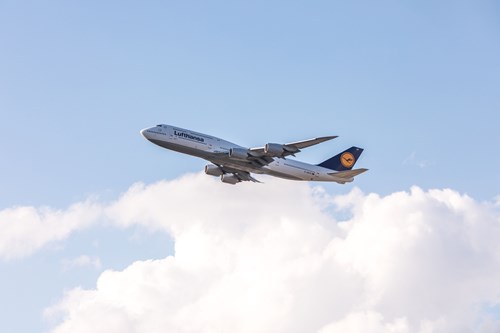Frankfurt airport launch RNP departure procedures

Less aircraft noise for cities and municipalities in the vicinity of the airport through closer adherence to defined flight paths immediately after take-off. This is the objective of a joint project of DFS, Fraport and Lufthansa. With RNP-1 and radius-to-fix, these companies are elevating precision navigation in air traffic to a new quality level. A level that is still unrivalled in Germany. The innovative procedure was used for the first time on 20 July for the departure of a Lufthansa Boeing 747-8 and DFS intends to apply it for further departure routes from Frankfurt. Frankfurt Airport is currently the only airport in Germany that uses this advanced navigation procedure for departures.
The navigation procedure RNP (required navigation performance) allows properly equipped aircraft to fly GPS-based radius-to-fix (RF) legs. Pilots can then fly a highly precise circle with a radius around a reference point determined by the air navigation service provider. In this way, aircraft can maintain their preset ideal curve at a constant distance from the reference point. Such a capability has the potential to positively influence the noise footprint for the people living in this area. The extent of any benefit can currently not yet be estimated with reasonable accuracy. It is planned to conduct trial operations with comprehensive monitoring in the upcoming months to learn more and gather reliable data. DFS and the Environment and Community Centre (UNH), an organisation run by the Federal State of Hesse, will cooperate in this monitoring process.
The procedure has been established at this time on the initiative of the noise abatement officers of the Federal State of Hesse who had identified deviations in the area of the second curve.

The new precision navigation system – which DFS, Fraport and Lufthansa have been testing since 20 July – should enable departures from Frankfurt Airport to fly their assigned track with a much greater degree of accuracy.
Simulations have shown that aircraft can maintain their tracks with more precision by means of RNP-1 and radius-to-fix, even in difficult wind and weather conditions. DFS will test the accuracy of this new procedure for six months on the existing conventional departure route, the southerly bypass. The greater track accuracy that is being sought will benefit, for example, southern parts of Nauheim as well as Trebur, Nackenheim, Bodenheim and some suburbs of Mainz which are currently still being overflown when the conventional departure route is used as a result of permitted deviations from the ideal track.

First flight with a queen of the skies – just like this Boeing 747-8 nearly all of Lufthansa's fleet is equipped with this new precision navigation system
Aircraft need to be equipped with the latest satellite navigation technology approved for RNP-1 in order to fly RF legs. Currently, only some of the aircraft departing from Frankfurt will be able to apply the procedure. Lufthansa, however, has equipped almost its entire fleet with this technology.
DFS, Fraport and Lufthansa have developed and implemented this new, sophisticated procedure with financial support from the European Commission and the Connecting Europe Facilities (CEF) programme. The procedure is part of the implementation of SESAR (Single European Sky ATM Research) and is steered by the SESAR Deployment Manager.






.png)




.jpg)


Comments
There are no comments yet for this item
Join the discussion